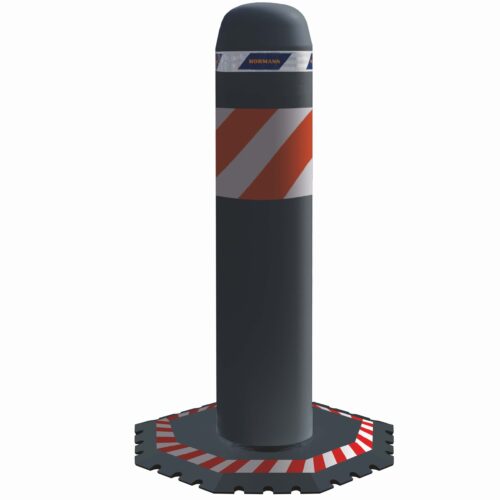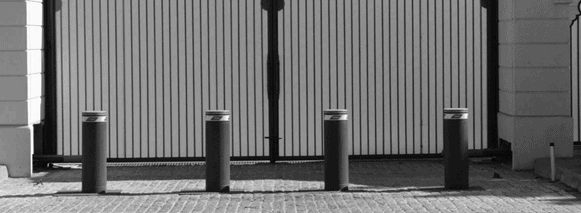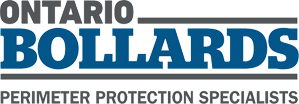Category Archive: K-Rated Bollards
The Evolution of Crash Rated and High Impact Bollards.
Bollards started out as simple posts that protected buildings from car accidents. Over time, they’ve become much more crucial in our cities. Today, bollards do more than just manage traffic and add beauty; they also protect us from terrorist attacks. These strong posts are designed to stop vehicles that might intentionally crash into crowded areas. As cities have grown and the need for safety has increased, bollards have evolved to meet these challenges. They play a key role in making public spaces safer for everyone.
USING BOLLARDS FOR PERIMETER PROTECTION
As we worry more about safety and security in cities, using both high-impact and anti-terrorism bollards has become key for protecting areas around buildings. High-impact bollards are placed to stop everyday accidents like a car going off the road. Anti-terrorism bollards are put around places that are at higher risk, to stop vehicles involved in more serious threats. Together, these bollards create a strong barrier. They make people feel safer and ensure public spaces are both secure and welcoming. This shows our commitment to making city landscapes safer.
UNDERSTANDING K-RATINGS
K-ratings were developed in response to growing security needs, especially after events like 9/11 showed how vulnerable urban areas could be. The Department of Defense first created these ratings to measure how well security barriers like bollards can handle vehicle crashes. The ratings are based on whether a barrier can stop a 15,000-pound vehicle moving at speeds of 30, 40, or 50 miles per hour.
These ratings help planners and security experts pick the right level of protection for different places. They make sure areas are safe from potential attacks. K-ratings have become a fundamental part of security planning in cities.
INTRODUCTION TO ASTM RATINGS
After K-ratings, ASTM ratings were introduced to give a more detailed way to measure how barriers like bollards perform against vehicle impacts. Developed by the American Society for Testing and Materials, these ratings look at how barriers stop different types and sizes of vehicles at various speeds.
For example, the ASTM F2656 standard checks how bollards handle impacts at speeds of 40, 50, and 60 mph. This detailed system lets us tailor security measures to the specific needs and threats of an area. Like K-ratings, ASTM standards help us choose the best security solutions for important places and keep up with changing threats.
Standard M Ratings
| Vehicle Size |
ASTM Standard |
Penetration Rating |
ASTM Speed Rating |
K-Rating Equivalent |
Products |
| Truck 15,000lbs |
F2656 |
P1 = ≤ 3.3 ft
P2 = 3.31–23.0 ft
P3 = 23.1–98.4 ft
P4 = > 98.4 ft
|
M30 (30 mph)
m50 (50 mph) |
M30 = K4 at ≤ 3.3 ft penetration
M50 = K12 at ≤ 3.3 ft penetration |
Click Here |
| Small Car |
F2656 |
P1 = ≤ 3.3 ft
P2 = 3.31–23.0 ft
P3 = 23.1–98.4 ft
P4 = > 98.4 ft |
C40 (40 mph) |
No K-rating equivalence |
Click Here |
DIFFERENCES BETWEEN RATED AND NON-RATED BOLLARDS
Understanding the roles of crash-rated versus non-rated bollards is important. Crash-rated bollards are tested to meet strict standards, which means they can handle high-speed impacts from vehicles. This is crucial in places that might face terrorist attacks or severe threats. These bollards not only stop a vehicle but also control how far it can go after crashing, which is key to reducing damage and injuries.
Non-rated bollards, on the other hand, offer basic protection. They are good for controlling traffic or for decoration in less risky areas. They help with low-speed bumps or minor crashes but aren’t meant for stopping high-speed vehicle attacks.
HOW CRASH-RATED BOLLARDS ARE INSTALLED
Installing Crash-rated bollards is a complex and precise task. It starts with a detailed look at the site to understand the traffic and potential threats. This helps decide the best places for the bollards.
The bollards need a strong foundation, usually a deep, reinforced concrete base, to handle the impact of a crash. The bollards are then placed into these bases and connected to each other for extra strength. After they’re installed, the area around the bollards is fixed up, often with paving or landscaping, to make sure they fit well with their surroundings.
Professionals test the bollards to make sure they work as expected. This installation process needs skilled planners and builders to make sure the bollards do their job well.
CREATING SECURE PERIMETERS WITH BOLLARDS
To make urban areas safe, planners use both traditional and crash-rated bollards together. Traditional bollards manage traffic and protect less critical areas. Crash-rated bollards are used where there’s a real risk of attack. They’re placed near important buildings or big public spaces to stop severe impacts.
Using these two types of bollards together helps keep public spaces open and friendly while making sure they are safe. This approach to security lets people enjoy their surroundings without worry.
HOW WE CRASH TEST OUR CRASH RATED BOLLARDS.

Revolutionizing Public Safety with OktaBlock: The Ultimate Mobile Vehicle Barrier Solution
In an era where public safety is increasingly at the forefront of urban planning and event management, the need for reliable and adaptable security solutions is paramount. This is where OktaBlock, a cutting-edge mobile vehicle barrier, comes into play. Developed by ANNT in collaboration with Hörmann/Pilomat, OktaBlock is designed to meet and exceed international crash test standards, providing unparalleled safety and peace of mind. In this blog, we’ll explore the innovative features of OktaBlock and its impact on enhancing public safety.
The OktaBlock Advantage
Certified for Maximum Safety
OktaBlock is not just any barrier; it’s a certified solution according to the highest international standards, including BSI PAS 68:2013 and IWA-14-1:2013. These certifications ensure that OktaBlock can withstand significant impacts, such as from an N2/N2A category vehicle weighing 7.5 tonnes at a speed of 50 km/h, absorbing around 750,000 joules of impact energy. This level of certification is critical for ensuring maximum safety in public spaces.
Innovative Design for Versatile Protection
One of the standout features of OktaBlock is its axisymmetric geometry, which allows it to repel vehicle collisions from any direction. This versatility is essential for unpredictable real-world scenarios, ensuring comprehensive protection regardless of the angle of impact. Additionally, OktaBlock’s design is non-threatening and inviting, seamlessly blending into urban landscapes while providing robust security.
Hassle-Free Installation and Maintenance
OktaBlock’s design facilitates a time-saving installation process. The fully assembled individual blockers can be easily positioned with standard equipment such as a crane or forklift truck, without the need for special technical knowledge or extensive civil work. This ease of installation makes OktaBlock an ideal solution for temporary events or rapidly changing security needs.
Flexibility and Cost-Efficiency
The flexibility of OktaBlock is unmatched. Whether it’s securing narrow streets, large public gatherings, or providing defined passage points for emergency and rescue vehicles, OktaBlock can be arranged individually in rows or offset to meet specific requirements. This flexibility, combined with its maintenance-free design, makes it a cost-efficient solution for a wide range of applications.
Additional Functionalities
OktaBlock goes beyond just being a barrier. It can be used as a notice or advertising space, creating new revenue streams for events. The option for an all-round banner maximizes its utility while maintaining its primary function as a security barrier.
Why Choose OktaBlock?
Choosing OktaBlock means investing in a solution that prioritizes public safety without compromising on flexibility, aesthetics, or cost-efficiency. Its certified protection, innovative design, and easy installation make it a top choice for urban planners, event organizers, and security professionals.
Adaptable to Various Scenarios
From city festivals to Christmas markets, OktaBlock can be rapidly deployed to secure any event or public space. Its modular nature allows for quick adaptation to different settings, ensuring optimal protection is always in place.
Sustainable Security Investment
Investing in OktaBlock is not just a short-term solution; it’s a sustainable approach to public safety. Its durable design and minimal maintenance requirements ensure that it remains a reliable barrier for years to come, providing long-term value and security.
Enhancing Public Confidence
The presence of OktaBlock barriers can significantly enhance public confidence in safety measures. Knowing that an area is protected by certified, impact-resistant barriers allows people to enjoy public spaces and events with greater peace of mind.
Conclusion
OktaBlock represents a new era in mobile vehicle barrier solutions, offering an unmatched combination of safety, flexibility, and ease of use. Its certification to the latest standards, innovative design, and additional functionalities make it a standout product in the realm of public safety. For those seeking a reliable, adaptable, and efficient way to safeguard public spaces, OktaBlock by ANNT/Ontario Bollards is the ultimate choice. With OktaBlock, you’re not just securing an area; you’re investing in the future of public safety and community well-being.
Email contact@anntbollards.com or info@ontariobollards.com for more information on the Oktablock.

K-Rated Bollards: What you need to know
Major metropolitan areas, regardless of where you are in the world, all share some commonalities. Droves of people, for one, are a big-city mainstay, as are newspaper and street food carts. While you may notice the crowds, and the vendors, there’s another city-fixture that may go undetected: the array of concrete-reinforced steel posts which stand at attention outside of storefronts and commercial buildings. These posts, called bollards, are not decorative, but rather serve the real-world purpose of providing passive Anti-Terrorism security in urban areas. As global tensions continue to rise and the threat of terrorism is ever-imminent, bollards have become a necessity in urban areas. However, not all Anti-Terrorism bollards are the same.
Know your ratings
These Anti-Terrorism bollards may all adhere to a fairly uniform appearance, but they are distinguished by capability according to two rating systems: K-ratings and M-ratings. While M-ratings are officially used throughout North America, K-ratings are still used as a common reference point in the industry.
K-ratings were introduced in 1985 by the U.S. Department of State, and are organized into three designations–all correlating to a bollard’s resilience against a 15,000 lb vehicle traveling at a given speed. A K4 can defend against said vehicle traveling at 30 mph, a K8 at 40, and a K12-rated bollard can successfully stop a 15,000 lb vehicle traveling at 50 mph. This advanced designation guarantees a bollard’s effectiveness as a last line of defense when it comes to protecting public–and private–spaces.
Engineered vs. certified bollards
All K-rated bollards are not created equal. Beyond the K-rating designation, the effectiveness of an Anti-Terrorism bollard can also be measured by whether it is engineered or certified. An Engineered K-rated bollard is engineered to certain specifications which would allow it to withstand a K-ratings’ given weight and speed parameters. This cost-cutting measure may ultimately diminish the effectiveness of a bollard. Ontario Bollards is proud to provide certified bollards, which all undergo rigorous testing as required by DOS, ASTM, PAS and IWA standards, ensuring that each of our Anti-Terrorism bollards is ready to provide real world protection, anywhere in the world.

Our Range of Stainless Steel Semiautomatic Retractable Bollards
Types of K-rated bollards
Among these various K-ratings, there are also different types of bollards which offer specific advantages depending on use.
Fixed bollards are exactly what they sound like, and are made to provide permanent passive protection.
Removable bollards, again, live up to their name, offering high-level security with the added advantage of being manually removed from spaces where infrequent access may be required.
Semi-automatic bollards are manually lowered into the ground via a crank or drill, and provide a cost-effective alternative to automatic bollards, which can be lowered remotely via a number of methods (a key pad, a push-button, or even a cell phone). Both semi-automatic and automatic bollards offer unparalleled versatility and ease-of-use, but the added convenience of automatic bollards makes them a top choice for any security solution–from the most basic to the more advanced.
Bollards for government use
K-rated bollards, in addition to protecting the populus in city centres, also offer a small-footprint solution for diverting traffic while still granting passage for smaller vehicles. This application makes them ideal for government buildings and spaces. Anti-Terrorism bollards can prove to be a tremendous asset to the municipal, provincial, and federal government, with the aforementioned different types of bollards offering unique benefits to each.
Provincial government buildings are made safer by the presence of fixed Anti-Terrorism bollards, as the lining of bollards around a building’s perimeter guarantees it safety from a high-speed vehicular attack.
Municipal government spaces may take advantage of the increased safety fixed K-rated bollards provide, while also leveraging their use to divert traffic away from designated areas such as school courtyards.
Federal government sites may benefit from the presence of automatic bollards which can prevent or grant access to restricted, high-security areas while guaranteeing protection.
While each branch can benefit from different types of Anti-Terrorism bollards for unique reasons, the most advanced solutions may require a combination of each type.
The Ontario Bollards advantage
When it comes to K-rated Anti-Terrorism bollards, there is a lot to know. Understanding which solution–or combination of multiple solutions–is right for your site may be easier said than done, which is why you can rest easy knowing that the experts at Ontario Bollards are on your team. Designing, sourcing, and installing all of our Anti-Terrorism solutions, Ontario Bollards are industry leaders in providing a turn-key experience.
Contact our experts today to learn more about how our K-rated bollard solutions can benefit your site, or request a quote for pricing details.
K-Rated Bollards vs. M-Rated Bollards
Bollards are a common sight at the front of nearly any commercial building. Typically installed near entrances, these architectural structures protect pedestrians and buildings from damage caused by oncoming vehicles. They are available in numerous variations to suit different purposes, such as preventing cars from inadvertently ending up on the sidewalk, minimizing the risk of vehicles rubbing against buildings in drive-thrus, or stopping heavy-duty vehicles from ramming into high-security facilities. In applications where there is a high risk of vehicle impact, crash-rated bollards are generally installed. These bollards are commonly rated based on one of two crash rating systems: K-ratings or M-ratings.
The following article discusses the differences between these two bollard crash rating systems.
K-Rated Bollards
K-rating bollard standards were originally developed by the United States Department of State (DOS) in 1985 and later revised by the DOS and Department of Defense (DOD) in 2003. Bollards that complied with these standards needed to withstand impact from 15,000-pound payloads (approximately the size of a medium-duty truck) moving at 30, 40, or 50 mph, depending on the rating.
- K4-rated bollards stop 15,000-pound vehicles moving at 30 mph (48 kph).
- K8-rated bollards stop 15,000-pound vehicles moving at 40 mph (65 kph).
- K12-rated bollards stop 15,000-pound vehicles moving at 50 mph (80 kph).
Following 9/11 and an increasing interest in developing technology to guard against criminal/terrorist attacks on buildings, the DOS updated these standards in 2003 to focus on the bollard’s effectiveness at stopping a moving vehicle (given that it is moving within its speed range) from passing the barrier.
- K-rated bollards with L3 certification stop vehicles with less than 3 feet of penetration.
- K-rated bollards with L2 certification stop vehicles with between 3 to 20 feet of penetration.
- K-rated bollards with L1 certification stop vehicles with between 20 to 50 feet of penetration.
Bollards with no certification have an unknown level of penetration resistance.
M-Rated Bollards
Following the widespread installation of K-rated bollards, the American Society of Testing and Materials (ASTM) developed and introduced a more comprehensive bollard crash rating system that focused on a bollard’s ability to stop vehicle penetration through the barrier. This new system largely replaced the older K-rating system as it outlined speed and penetration ratings for a broader range of vehicles, including small passenger vehicles (2,430 lbs.), pickup trucks (5,070 lbs.), medium-duty trucks (15,000 lbs.), and heavy-duty vehicles (65,000 lbs.). However, many industry professionals continue to use the term “K-rating” when talking about barrier crash ratings for medium-duty trucks.
Bollards rated for medium-duty vehicles could receive M-ratings.
- M30-rated bollards stop 15,000-pound vehicles moving at 30 mph (48 kph).
- M40-rated bollards stop 15,000-pound vehicles moving at 40 mph (48 kph).
- M50-rated bollards stop 15,000-pound vehicles moving at 50 mph (48 kph).
They could also be certified regardless of how far a vehicle travels past the barrier.
- M-rated bollards with P1 certification stop vehicles with less than 3.3 feet of penetration.
- M-rated bollards with P2 certification stop vehicles with between 3.31 to 23 feet of penetration.
- M-rated bollards with P3 certification stop vehicles with between 23.1 to 98.4 feet of penetration.
- M-rated bollards with P4 certification stop vehicles with over 98.41 feet of penetration.
The revision of the rating standards and the replacement of old standards led to building designers and security experts putting more trust in the ability of M-rated bollards to resist high-speed, heavyweight impacts.
Partner With Ontario Bollards for Quality Protection Products
M-rated bollards—also commonly referred to as K-rated bollards—serve a critical role in anti-terrorism efforts. P1-certified bollards prevent 15,000 lbs. vehicles at a specific speed from penetrating the barrier beyond 36 inches, which helps minimize and/or eliminate the risk of injury to pedestrians and damage to buildings caused by oncoming cars and trucks. If you need K-rated bollards for your facility, Ontario Bollards has got you covered.
At Ontario Bollards, we specialize in supplying, installing, and servicing the equipment you need to protect people and assets at your facility. One of our core product offerings is anti-terrorism (K-rated) bollards. To learn more about our product and service offerings, contact us or request a quote today.




